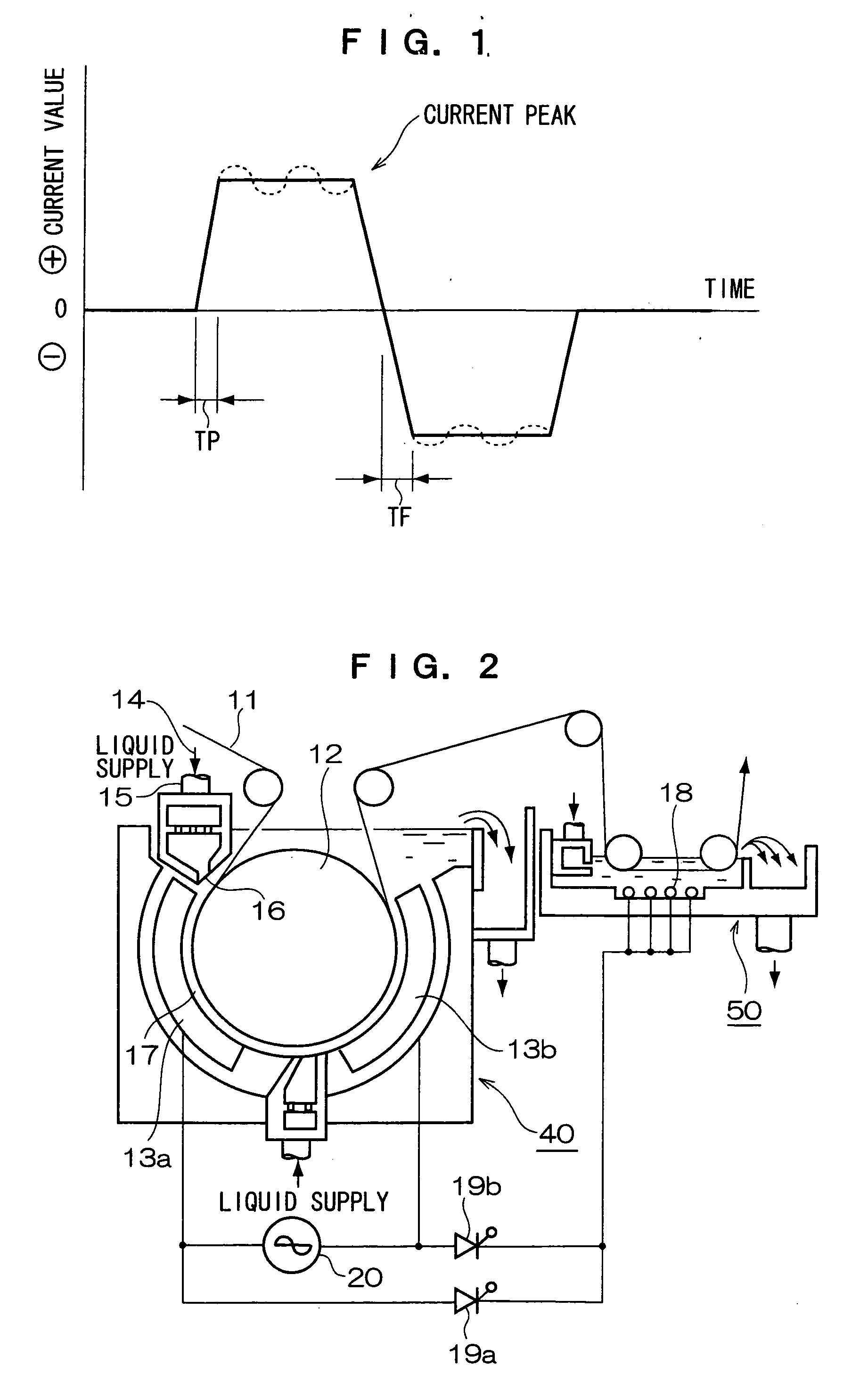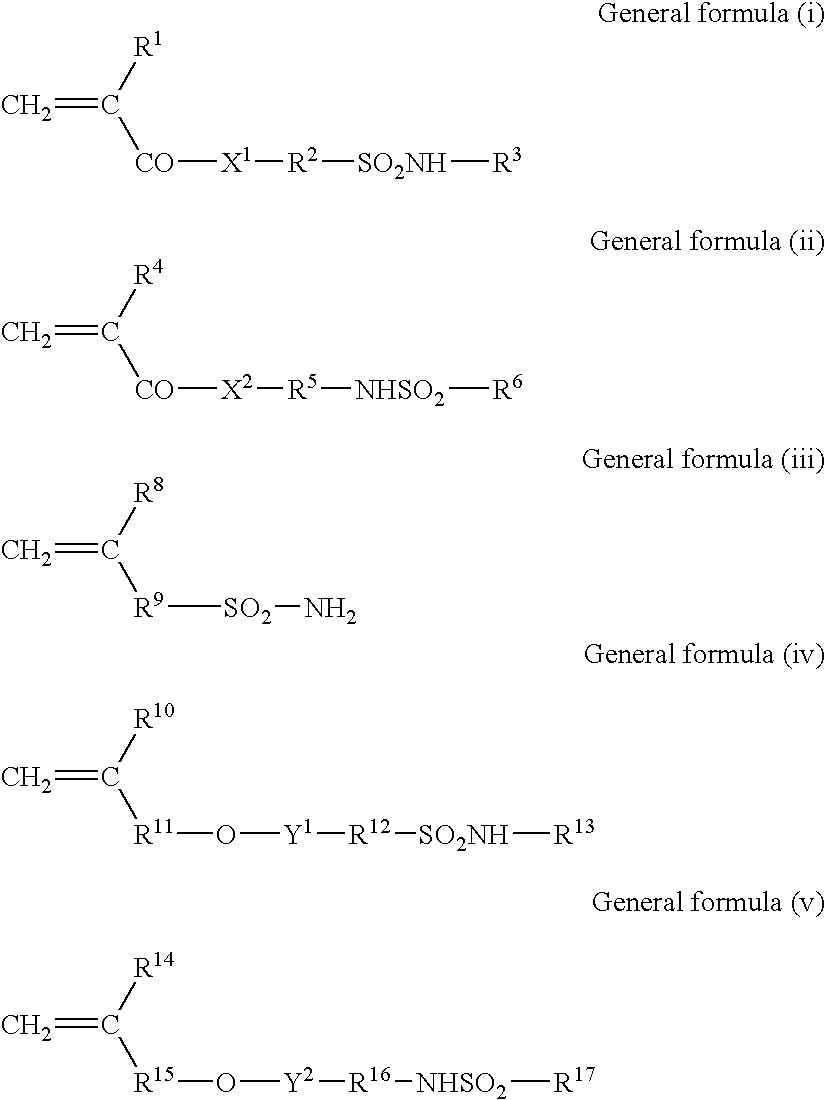Planographic printing plate precursor and method of producing the same
- Summary
- Abstract
- Description
- Claims
- Application Information
AI Technical Summary
Benefits of technology
Problems solved by technology
Method used
Image
Examples
example 1
Preparation of a Support
[0271] An aluminum alloy containing 0.06 wt % Si, 0.30 wt % Fe, 0.025 wt % Cu, 0.001 wt % Mn, 0.001 wt % Mg, 0.001 wt % Zn and 0.03 wt % Ti, the balance being Al and inevitable impurities, was used to prepare molten metal. The molten metal was then subjected to molten metal treatment, filtered and formed into an ingot of 500 mm in thickness and 1200 mm in width by a DC casting method. After scalping its surface layer at 10 mm average thickness with a scalping machine, the ingot was soaked at 550° C. for about 5 hours, and when the temperature decreased to 400° C., the ingot was formed into a rolled plate of 2.7 mm in thickness with a hot rolling mill. Then, the plate was subjected to heat treatment at 500° C. with a continuous annealing device and finished with cold rolling to give a plate of 0.24 mm in thickness as an aluminum plate of JIS 1050 material. The minor axis of the average crystalline particle diameter of the resulting aluminum was 50 μm, and the...
examples 2 to 4
[0296] The planographic printing plate precursors in Examples 2 to 4 were prepared in the same manner as in Example 1 except that the lower recording layer coating solution 1 used in Example 1, were changed to use the amounts of novolac resin and N-(4-aminosulfonylphenyl) methacrylamide / acrylonitrile / methyl methacrylate resin as shown in Table 1 below.
TABLE 1N-(4-Aminosulfonylphenyl)methacrylamide / acrylonitrile / methyl methacrylate resinNovolac resinExample 21.69 g0.42 gExample 32.00 g0.12 gExample 41.60 g0.53 g
example 5
[0297] The planographic printing plate precursor in Example 5 was prepared in the same manner as in Example 1 except that the drying conditions in formation of the recording layers in Example 1 were changed to as described below.
[0298] That is, the following lower layer coating solution 2 was applied by a bar coater onto the same support as in Example 1 such that the coating amount became 0.85 g / m2, and then dried at 170° C. for 35 seconds and immediately cooled with cooling air at 17 to 20° C. until the temperature of the support became 35° C.
[0299] Thereafter, the above upper layer coating solution 1 was applied by a bar coater such that the coating amount became 0.22 g / m2, and then dried at 140° C. for 60 seconds and then gradually cooled with air at 20 to 26° C., whereby the planographic printing plate precursor in Example 5 was prepared.
[0300]
N-(4-Aminosulfonylphenyl) 2.20 gmethacrylamide / acrylonitrile / methyl methacrylate(36 / 34 / 30, weight-average molecular weight100,000, aci...
PUM
 Login to View More
Login to View More Abstract
Description
Claims
Application Information
 Login to View More
Login to View More - R&D
- Intellectual Property
- Life Sciences
- Materials
- Tech Scout
- Unparalleled Data Quality
- Higher Quality Content
- 60% Fewer Hallucinations
Browse by: Latest US Patents, China's latest patents, Technical Efficacy Thesaurus, Application Domain, Technology Topic, Popular Technical Reports.
© 2025 PatSnap. All rights reserved.Legal|Privacy policy|Modern Slavery Act Transparency Statement|Sitemap|About US| Contact US: help@patsnap.com



